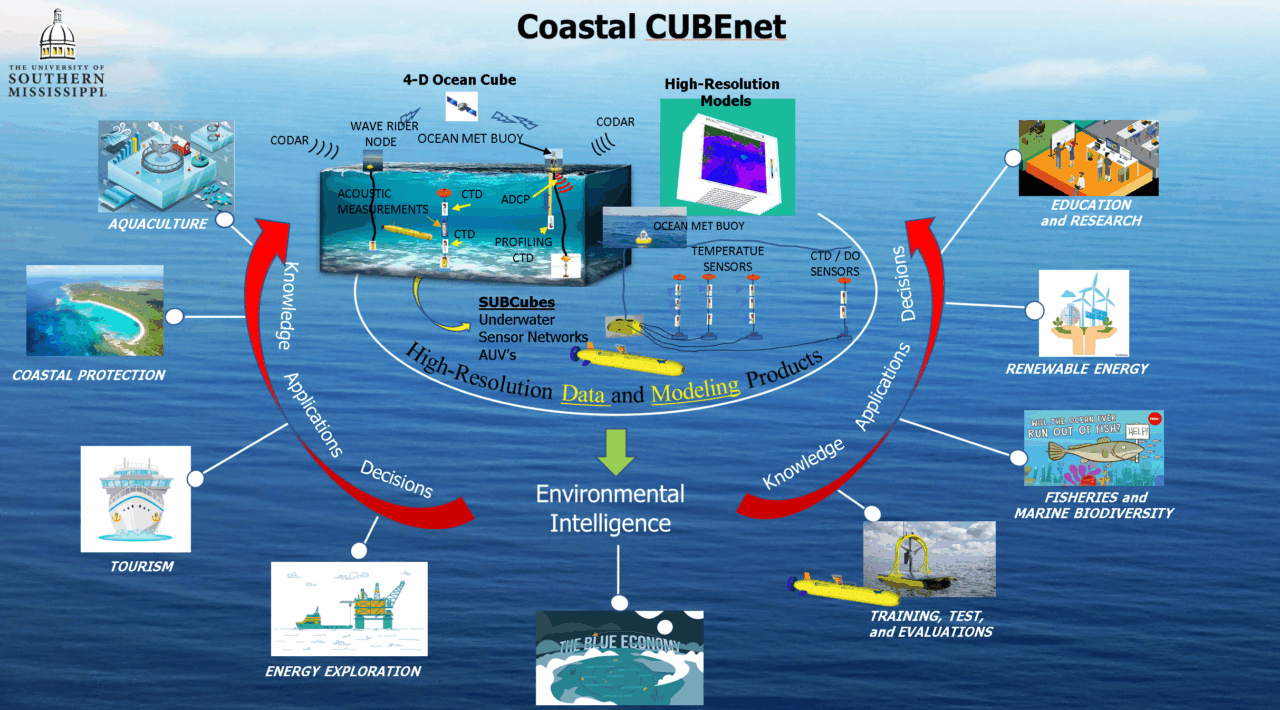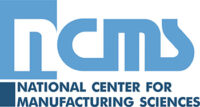The University of Southern Mississippi’s School of Ocean Science and Engineering (SOSE) provides advanced research, education, and technical services across ocean-related disciplines. SOSE has faculty expertise in oceanography, ocean engineering and hydrography and the design, operation, and coordination of autonomous underwater and surface platforms. A particular strength lies in the development of small AUVs, to support high-resolution seafloor mapping and coastal monitoring.
SOSE operates a fleet of autonomous systems and develops oceanographic models to predict and optimize operational conditions. These capabilities enable the execution of collaborative, multi-platform missions in complex marine environments.
SOSE also has access to a dedicated testbed in the northern Gulf, equipped with a permanently installed ocean sensor network. This infrastructure provides real-time environmental data and forecasting tools that support testing, validation, and operation of autonomous platforms under realistic and challenging conditions. The testbed combines in-situ and autonomous measurements, ocean model products and satellite imagery to study shallow & complex estuarine/inner-shelf environments. Observations from buoy systems for wave/current/atmosphere, moored sensors/instruments (e.g. CTD, ADCP) for temperature/salinity/velocity, and water quality (e.g. PH) are combined with measurements from autonomous underwater/surface vehicles (e.g. Iver-3/WAM-V), operational ocean model products, and satellite imagery.
Focus Area: Energy, Environmental, Health, and Safety
Contact
Gero Nootz
gero.nootz@usm.edu
407-463-6834

Ocean Testbed with Autonomous Vehicles and Operational Oceanography
Problem Statement:
Shallow water near-coastal and estuarine environments present unique challenges for fleet readiness and sustainment:
- varying salinity conditions may affect equipment performance and corrosion
- high levels of sediments and marine life both reduce visibility and make maintenance difficult
- strong waves and currents making navigation, operations and maintenance difficulty in complex shallow water environments
- estuarine environments can accelerate equipment wear and require specialized maintenance
Therefore, it is critical to efficiently observe and accurately predict the dynamics of such complex environments.
Technology Solution Statement:
- Advancements in operational coastal ocean forecast models may help accurately predict the shallow water marine environments of navy operations and may help streamline maintenance needs and processes,
- Observations from remote sensing, in-situ and autonomous measurements will allow data assimilation into operational ocean models to improve accuracy,
- Long-term model data creation and synthesizing with satellite data and field measurements will allow development of machine learning strategies to fill future observational gaps and contribute to overall sustainment and readiness of the fleet.
Benefits Statement:
Ocean modeling combined with autonomous and remote sensing measurements may support maintenance efforts as well as help optimize readiness where in-situ observations are not available. The testbed:
- Enables improvement of a predictive dashboard of degraders in complex shallow water environments,
- Provides operational forecast and improve fleet readiness ahead of time,
- Allows integration of in-situ measurements (e.g. buoys, moorings) and autonomous vehicle data with satellite remote sensing and ocean model products within a testbed for emerging technologies.





